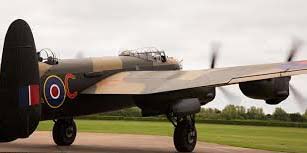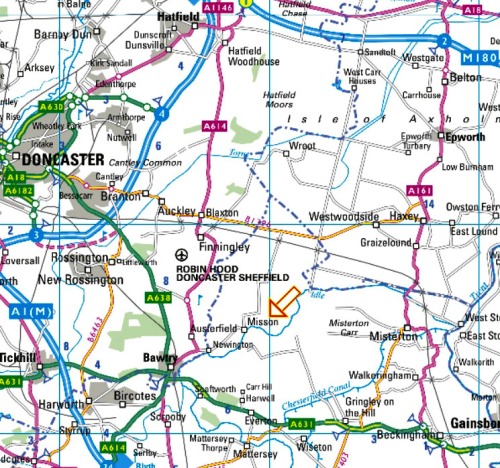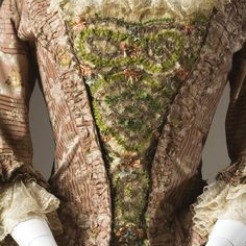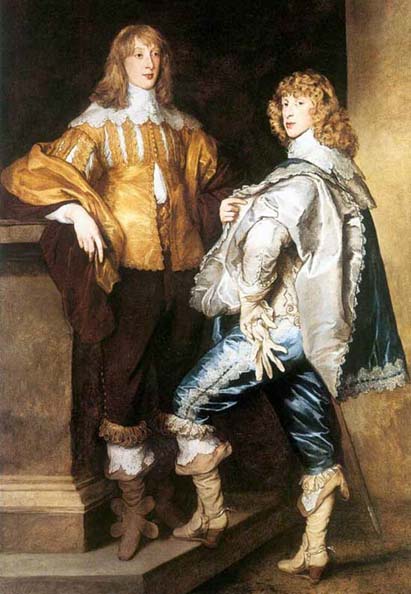The fact that a small group of children in Nottingham claim to have seen gnomes in leafy Wollaton Park seems incredible, almost ludicrous, in the cold light of day, but it is by no means an isolated incident.
I have spoken in the past of so-called “UFO flaps”, when many sightings occur in just one small area. An example would be the Nottingham UFO flap of July 1967. Similar events occurred nationally in 1964, although this time it involved gnomes, pixies, leprechauns, fairies and their ilk rather than extraterrestrial spacecraft:

What was particularly bizarre though, was that the little people, who were seen in three separate places in England during the course of the year, were not closely linked with one particular city, but occurred independently hundreds of miles from each other.
And these widely separated events cannot possibly have been interlinked, because communication in those days was so limited and so private. Just letters or postcards. Telephones were a lot less frequent than you might imagine. You read only national newspapers or your own local paper. Local newspapers from distant cities were more or less unobtainable. The only television was national television… not really a medium for gnomes and fairies!
It sometimes seems that goblins and their ilk are part of our natural landscape and seem to pop out into our world on a rare but fairly regular basis. I presume that this is why nowadays a lot of modern folklorists tend to equate widespread ancient belief in gnomes and their various friends with our current widespread modern belief in space aliens, little green men and tales of abduction.

It is this process of flitting between dimensions which remains the same over thousands of years, even if those who do it may have slightly differently coloured clothes and a vastly changed appearance.
And their activites are the same too. After all, how much difference is there between fairies who hold people hostage in their fairy realm and our modern tales of UFOs and extra-terrestrial kidnap?
Back to the simpler stuff.
On June 30th 1964, children saw varying numbers of “little men” in Jubilee Park, Liverpool. Here is the entrance to the park. No Leprechauns in sight yet:

Nobody knows exactly what the children saw. The little men had “white hats”, and were all seen to be enthusiastically throwing clods of earth at each other.
It took the children very little time indeed to put two and two together, and within minutes they had made a “Positive I.D.” and decided that the little men were, in fact, leprechauns.

Don’t just a few of the Leprechaun Community look really menacing? It spoils it for the rest.
The following day, July 1st 1964, all the local newspapers claimed that thousands of children had started a hunt, following reports that little green men or leprechauns had been seen near the Bowling Green in Jubilee Park on Jubilee Drive in Liverpool. This was in the Edgeline district in the eastern suburbs of the city. A huge orange arrow has been fired right into the middle of the Bowling Green. No Leprechauns were injured:

Very soon, Members of the Police Community had to be called in to control the crowds:

A nine year old boy told a reporter that he had seen little men in white hats, throwing stones and mud at each other on the Bowling Green. Another local boy, fourteen year-old David Wilson, claimed to have seen several small green creatures about two feet high running around a haystack on a farm near to the Edgeline Estate:

A little girl said:
“I was one of the school children that saw those leprechauns. I attended Brae Street School and we all saw them popping in and out of a window overlooking the school yard. There were about four of them, all tiny, dressed like a school book idea of a typical gnome and they sat swinging their legs on the window ledge getting in and out. What they were I don’t know. I only know what they looked like. I’d love to know the truth!!!”
Another child said:
“I remember the siege of St Mary’s Church when the police and Father Rose (or Father Spain) appealed for calm. I was one of the huge crowd of children shouting out “there they are”.
Someone said they had crossed the road into St Mary’s Infants School and were now hiding in the lockers (small cube-like cupboards). I never slept for days, and have had a fear of these type of cupboards to this day, which is still tested as my grandchildren’s nursery school use something similar.”
Nobody ever found the leprechaun who was sitting quietly smoking his pipe:

A further witness said:
“I certainly remember the leprechauns, and I actually saw a few of them on Kensington Fields, close to the library, but my parents and other adults tried to convince me that I”d been seeing things. This would be one afternoon in early July 1964, around 4.30pm, and I remember it as if it were yesterday. I was ten at the time and on my way to play football with my mates and saw these little (I’d say just a few inches tall) men dressed in red and black, standing in the grass, looking at me. I’m sure one of them had some type of hat on. I panicked and ran all the way home. My mum said there had been reports of leprechauns and little men on Jubilee Drive and Edge Lane the day before. That same evening crowds turned up on Jubilee Drive, and I remember a girl with a jam jar that she was going to put the leprechauns in!”
The Bowling Green was so crowded that the police attenpted to clear the park and to guard it from the bands of children who were tearing up plants and turf in the search for the little creatures.

A rather bewildered Park Constable James Nolan had to wear a crash helmet to protect himself from the children throwing stones. At the time of the incident Constable Nolan was one of some fifty City and Parks Police Officers who patrolled the city on blue coloured Vespa scooters with a fixed radio mounted on it – in those days it was state of the art in police communications.
A local woman said to reporters at the time:
“This all started on Tuesday, how I just don’t know, but the sooner it ends the better. Stones have been thrown on the Bowling Green, and for the second night running no one has been able to play. The kids just won’t go away. Some swear they have seen leprechauns. The story has gone round and now we are being besieged by Leprechaun Hunters.”
Here is the Bowling Green in more recent times:

Such was the desperation of the children’s search that the police had to set up a temporary first aid shelter to treat at least a dozen children who suffered from cuts and bruises. The evening newspapers described the strange visitors as “little green men in white hats, with rhinestones and hurling tiny clubs of earth at each other.”
Thousands of children organised an extensive hunt for them, tearing up plants and turf, scaling surrounding walls, and searching empty houses well beyond the boundaries of Jubilee Park. Eddie McArdle recalled:
“I remember the story well as I have a scar as a constant reminder of the event. We, the kids from St Marie’s, Kirkby, went en masse into the church and as we hunted the little people, some bright spark shouted that they were coming out after us. Panic ensued and as we all fled quicker than we entered. A boy who is sadly no longer with us swung the church gate in his haste to escape, and I was hit on the forehead by the metal cross on it. The lad, Danny Callahan, didn’t even know he had injured me as he was well up the street and along Elric Walk where I lived. I had to have my head stitched by Dr Cole. As far as I know I was the only person injured by the little visitors. “
Life was getting no easier for Park Constable Nolan, who called in the City Police. Constables in cars and on motorcycles arrived.

They again attempted to clear the hundreds of youngsters from the bowling greens, which were the alleged playground of the Leprechauns. But the youngsters still thronged there, toddlers to teenagers. They crowded onto the top of the covered reservoir for a better view of the bowling green. Tolerant policemen tried to get the youngsters to leave, but the children would not accept that there were no Leprechauns. Only at 10.00pm was the park finally cleared of children.
Over the next few days, thousands of kids visited not just Jubilee Park, but nearly all of the parks in the City. Some of the Leprechauns still managed to look a bit “iffy”:

The Little People were seen in Abercromby Park, in Stanley Park, in Newsham Park, and in Sefton Park, where a 13-year-old girl said she even grabbed one little man but he slithered from her grasp and fled laughing.
In Kirkby it took almost a fortnight for the clergy and the police to clear more than two hundred children from the graves and tombs of St Chad’s Church where it was believed fairies were living. Certainly, witnesses had repeatedly seen elfin figures dancing in the moonlight and, a sure sign of the supernatural, a crop circle had appeared. A month or more afterwards trolls were repeatedly seen outside St Mary’s Church in Northwood.
But then gradually reports became fewer and fewer and further and further in between, until the City returned slowly but surely to its humdrum normality.
I would have been unable to tell this long forgotten, and rather peculiar story, were it not for the very many places where it can be read in all of its very many different variations. Some of the links are all here in this short paragraph.
I found the story originally in one of a series of absolutely marvellous books by John Hanson and Dawn Holloway. This particular one is ““Haunted Skies: The Encyclopedia of British UFOs Volume 2 1960-1965”. I would recommend these books most strongly:































 38th Bomb Group – 823rd Squadron
38th Bomb Group – 823rd Squadron  Ed Poltrack in Cockpit
Ed Poltrack in Cockpit 

































